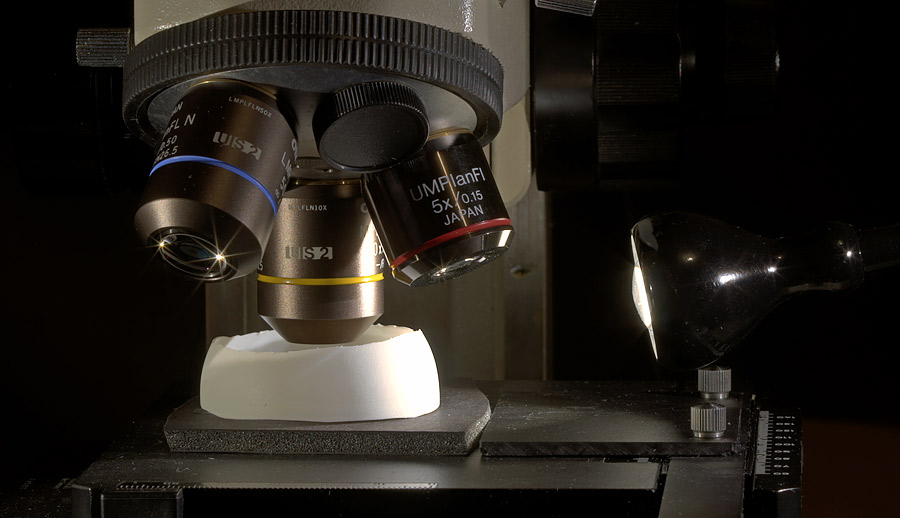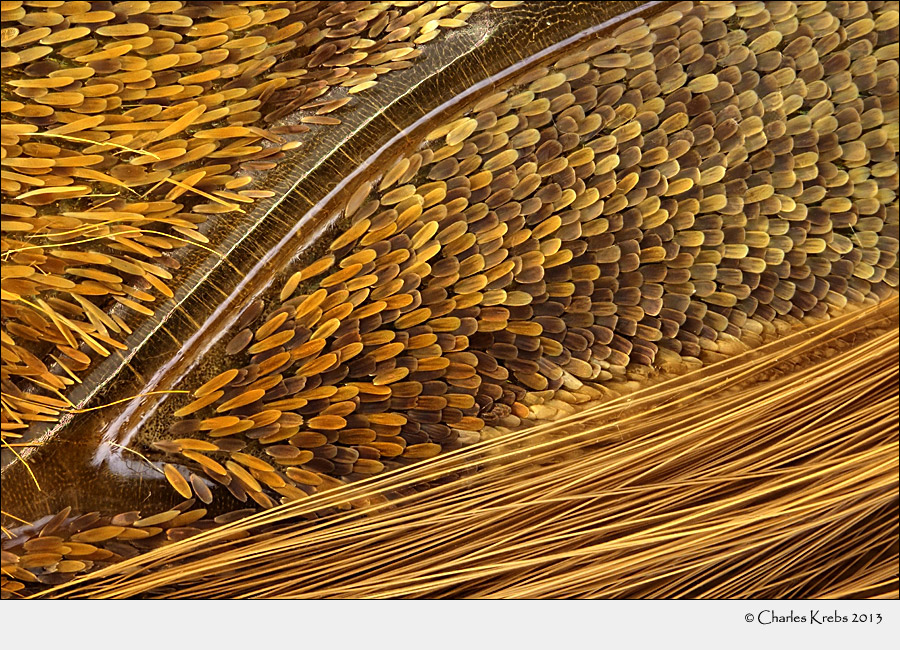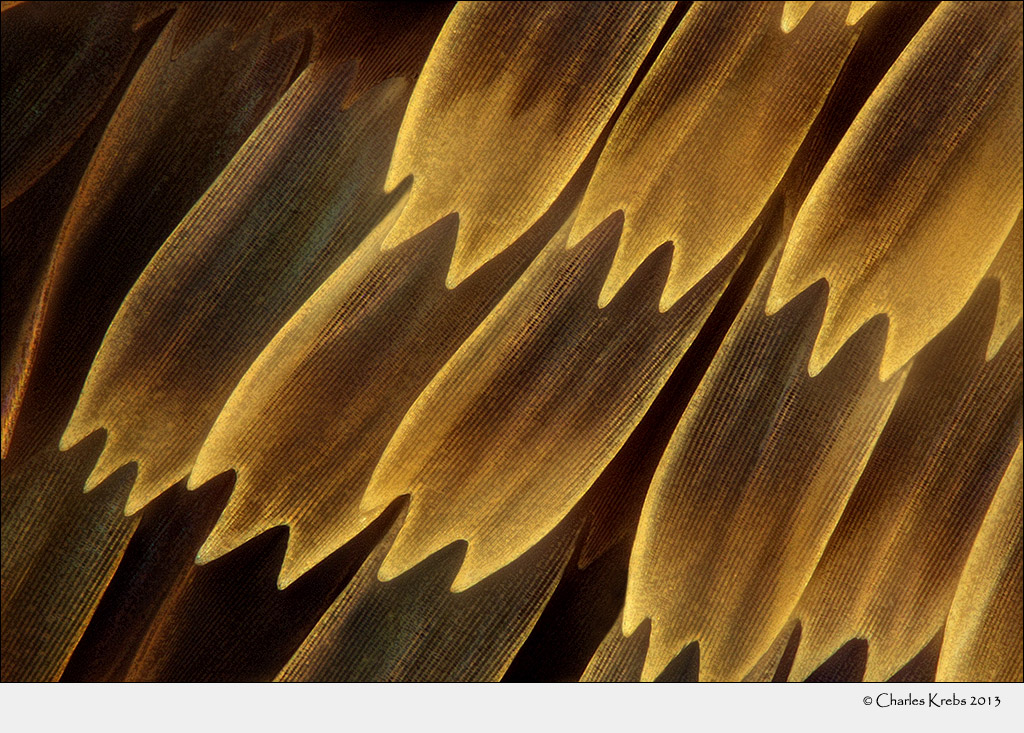Thanks for the kind remarks!
With my
MM-11 setup I have been using a very simple but effective method of illumination when working with
non-iridescent butterfly and moth wing-scales and wings.
(A few other relatively recent posts where I was very pleased with the outcome using this same lighting method can be seen
here, and
here.)
It is just a curved ring cut from one of those super large (50mm diameter) ping-pong balls. Up to three (typically two, sometimes only one) of the Ikea LED lights are used at low angles as seen below. If I move the light in really close (almost touching the ball section) the shadows get much stronger (smaller effective light source). If I pull it back or add a second light to illuminate a larger surface area it is possible to soften the shadows significantly. If the edge of the ball section is moved closer to the section being photographed (the picture below shows it "centered") it will illuminate the subject part closest the the ball more brightly and there will be some light fall-off across the subject, which can actually be useful at times. It is very easy to control the intensity of the shadows by either adding another light to the opposite side, or simply by raising the main light up just a little so some of it will spill over to the back of the ball where it reflects light back into the shadows (as can be seen below to the left of the objective being used). It is also important to determine the angle of the scales and wing veins relative to the direction of the light. Sometimes I'll use a rotating stage. Other times (as is the case here) the subject is on a piece of black foam-core and rotated by hand.





